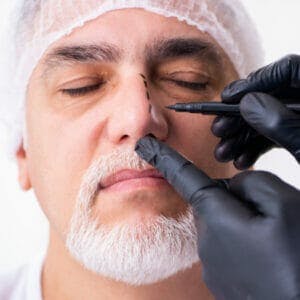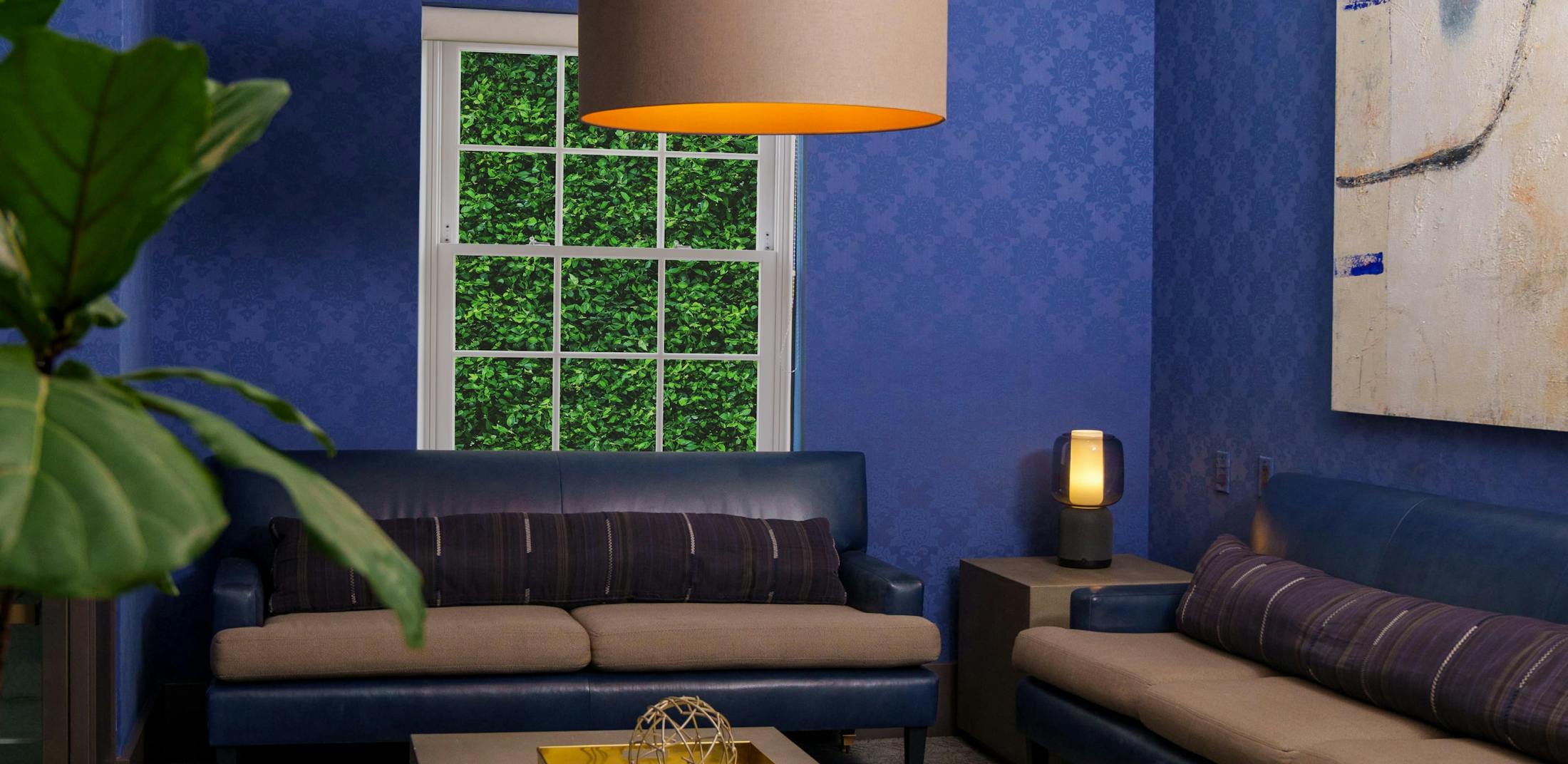
As we age, our bodies and faces begin to change. Our skin starts to sag in places where it was once taut, our eyes start to strain to see the same things we used to see easily, and our joints begin to ache where they used to be flexible. While we tend to expect these types of changes with age, we’re not always ready for the changes that can occur to our noses as we get older.
Our noses do age with time, often leaving many senior citizens feeling self-conscious. Some seniors wonder if rhinoplasty is a safe procedure and if the recovery process is appropriate for older people. If you find yourself in this category, keep reading. You’ll be relieved to hear that nose jobs aren’t only for the young! Senior citizens can most definitely benefit as well. However, there are certain precautions that should be taken when a senior citizen goes under the knife.
To ensure the best outcome possible, let’s discuss the ins and outs of rhinoplasty for senior citizens.
The Aging Process of the Nose
The natural aging process of the nose generally causes its shape and size to change. The skin loses elasticity and begins to sag, and the structure and cartilage of the nose begin to weaken. These changes can make it appear as though your nose is drooping, longer, or exhibiting a more prominent nasal hump.
People with very thin skin may notice these changes sooner than others, or their delicate, thin skin may cause subtle nose changes to visually appear more dramatic than they actually are. This can cause unnecessary stress.
As we continue to age, our noses also absorb different tissues and bones, and by the time we are senior citizens, a nose that once looked symmetrical and in harmony with the rest of a person’s facial features may now feel out of sync, too bulbous, or too large. An older nose can also function poorly, as the nasal passages shift as the nose changes shape.
Even though these types of nose changes are 100% normal, they can also be very distressing for senior citizens who may have experienced decades of unwanted changes. That’s why it’s helpful to know there are safe options to address these concerns. An empathetic and skilled rhinoplasty surgeon can make seniors look and feel their best, no matter their age, as long as they are in relatively good health and are a good candidate for surgery and recovery.
What Is a Rhinoplasty?
Rhinoplasty, more casually referred to as a “nose job,” is an invasive surgical procedure that physically alters the size and/or shape of the nose. It generally addresses a variety of concerns, including altering the size, shape, angle, or proportions of the nose. Additionally, rhinoplasty can address functional issues, such as improving breathing difficulties caused by structural abnormalities in the nasal passages.
If you are a senior citizen, an experienced and compassionate plastic surgeon will tailor your rhinoplasty procedure and recovery process specifically for you.
Consultation
The first step for senior citizens considering rhinoplasty is to schedule a consultation with a board-certified plastic surgeon who has experience performing surgery on older patients. During this consultation, the surgeon will evaluate your medical history and current health condition and discuss your expectations and desired outcomes. Don’t be shy during the consultation, as open and honest communication is necessary to ensure that your unique needs and goals are clearly understood.
A thorough plastic surgeon will take into account the specific changes that have occurred with age and are now causing undue stress. The surgeon will also take special note of potential underlying conditions that could complicate the surgery or recovery process. They will then carefully develop a personalized treatment plan that will best help you achieve a natural-looking new nose you can feel confident about.
The Surgery Procedure
 As a senior citizen, you can either have an open or closed rhinoplasty, depending on the complexities of your specific situation and the surgeon’s professional opinion. Open rhinoplasty involves a small incision made across the columella (the strip of tissue between the nostrils), which allows better access to your nasal structures. Closed rhinoplasty involves incisions within the nasal passages, resulting in no external scarring.
As a senior citizen, you can either have an open or closed rhinoplasty, depending on the complexities of your specific situation and the surgeon’s professional opinion. Open rhinoplasty involves a small incision made across the columella (the strip of tissue between the nostrils), which allows better access to your nasal structures. Closed rhinoplasty involves incisions within the nasal passages, resulting in no external scarring.
The surgery typically includes reshaping the cartilage and bones to achieve the desired look that was previously discussed at the consultation. The surgeon may remove or add tissue, depending on the specific goals you discussed during the consultation. If functional issues are being addressed, your surgeon may also correct nasal obstructions, allowing for improved breathing.
Recovery and Post-Operative Care
Recovery from rhinoplasty always requires patience and adherence to post-operative instructions, and this is even more important for older individuals. Senior citizens may have unique considerations when it comes to healing and rehabilitation. Here are some general guidelines for a smoother recovery:
- Follow the surgeon’s instructions: It is important to follow all post-operative care instructions provided by your surgeon carefully. This includes proper wound care, taking prescribed medications, and attending all follow-up appointments.
- Rest and take it easy: Allow yourself ample time to rest and recover. Avoid strenuous activities, heavy lifting, and bending over for the first few weeks. This will aid in minimizing swelling.
- Manage discomfort and swelling: Swelling and discomfort are common after rhinoplasty. Applying cold compresses and taking prescribed pain medications can help manage these symptoms. Sleeping with your head elevated can also reduce swelling.
- Be patient with results: It takes time for the swelling to fully subside and for the final results to become apparent. As a senior, you may experience a slightly longer recovery period compared to younger individuals. It’s therefore important to have realistic expectations and understand that the final outcome may take months.
- Maintain a healthy lifestyle: As a senior recovering from rhinoplasty, it is essential to maintain a healthy lifestyle. This includes eating a nutritious diet, staying hydrated, and avoiding smoking or excessive alcohol consumption. These habits promote overall well-being and contribute to healing.
- Protect your nose from injury: During the healing process, you must protect your nose from accidental bumps or injuries. Be mindful of your surroundings and avoid activities that may put your nose at risk. It may be beneficial to wear protective headgear if engaging in activities with a higher risk of facial trauma.
- Embrace self-care: Recovering from any surgical procedure can be emotionally and physically demanding. Prioritize self-care and engage in activities that promote relaxation and mental well-being. Surround yourself with a supportive network of family and friends who can offer assistance if need be and provide encouragement throughout the recovery process.
Key Takeaways
Rhinoplasty can be a transformative procedure for senior citizens seeking to enhance the appearance of their nose and/or address functional concerns. By choosing a skilled surgeon and maintaining realistic expectations, individuals can achieve natural-looking results that beautifully fit their face and age.
The best outcomes generally require patience, adherence to post-operative instructions, support, and self-care. Choosing a caring and qualified plastic surgeon will be paramount as you embark on a safe journey toward renewed self-confidence.

